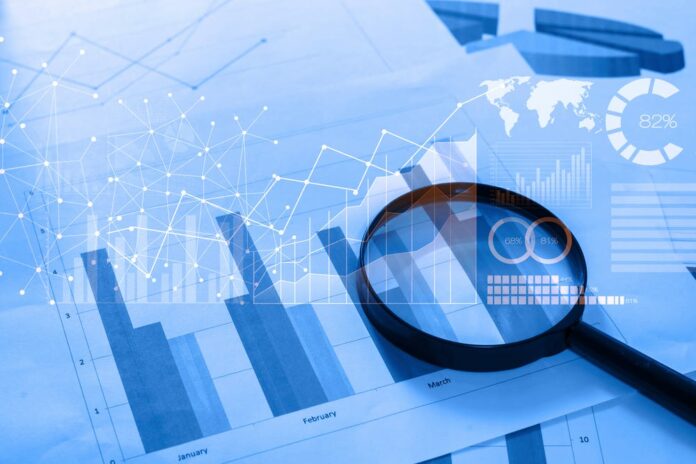Data analysis has become increasingly critical for modern businesses, organizations, and government agencies. As more and more data is collected, the need for people who can analyze and interpret this data has grown significantly. In this article, we will explore why data analysis is important in the modern world, the rising demand for data analysts, and the emerging trends in data analysis.
The Importance of Data Analysis
Data analysis plays a critical role in modern-day business operations. It allows companies to gather, organize, and interpret large amounts of data to gain insights into their business operations, which can help them make informed decisions.
It reveals patterns
One significant advantage of data analysis is that it can reveal patterns and trends that may not be apparent from a simple data review. By using advanced analytical techniques, data analysts can identify relationships between variables and discover insights that would otherwise be hidden. This can be particularly helpful for businesses that need to make quick and informed decisions based on current data.
It helps with business improvement.
Moreover, data analysis is essential in identifying areas where a business can improve its operations. For instance, by analyzing customer feedback, companies can identify areas where they should improve their products or services. They can then make necessary adjustments to address these issues, increasing customer satisfaction and loyalty.
It plays a key role in healthcare.
Data analysis is also critical in healthcare, where it can help researchers identify new treatment options, track the spread of diseases, and identify factors that may contribute to disease outbreaks. This information can be used to create effective public health strategies and reduce the impact of epidemics. Furthermore, data analysis is used in research to identify patterns and relationships between different variables, which can lead to discoveries in various fields.
In other words, data analysis is essential in today’s world. It provides valuable insights into various aspects of a business, which can help organizations make informed decisions, optimize processes, and increase revenue.
The Rising Demand for Data Analysts
The increasing importance of data analysis has led to a surge in demand for data analysts. The need for data analysts has increased exponentially in recent years, and this trend will continue in the coming years. As per the US Bureau of Labor Statistics, employment in data analysis is projected to grow by 31% from 2019 to 2030, quicker than the average for all occupations. The growing use of big data in various industries, including finance, healthcare, and technology
, drives this increase in demand. Additionally, this data must be analyzed to gain insights and improve decision-making.
With the rise of big data, the demand for skilled data analysts is only expected to increase, making it a highly sought-after and lucrative career choice. Additionally, more businesses rely on data-driven decision-making; hence the demand for skilled data analysts will only continue to increase.
Emerging Trends in Data Analysis
As data analysis continues to evolve, new trends and technologies are changing how data is collected, analyzed, and interpreted. Here are some emerging trends in data analysis:
Data Visualization
A data analyst job involves data visualization, the art of graphically representing data. It is becoming increasingly important in data analysis, allowing analysts to present complex data clearly and understandably. Data visualization tools, including Tableau, Power BI, and D3.js, enable analysts to create interactive visualizations that help stakeholders gain insights into data patterns and trends.
Data visualization is essential for non-technical stakeholders who may not have the technical knowledge to interpret raw data. By presenting data in an easy-to-understand format, data visualization can help organizations make better-informed decisions.
Machine Learning and Artificial Intelligence
Machine learning and artificial intelligence (AI) are dramatically changing the field of data analysis. Machine learning algorithms can learn from large datasets and identify patterns and relationships that may not be immediately obvious to human analysts. These technologies can help analysts automate routine tasks such as data cleaning, preprocessing, and analysis, freeing them up to concentrate on more complex tasks.
AI is also used to develop predictive models that can forecast future trends and events based on historical data. For example, AI-powered models can predict future sales trends and customer behavior or identify potential risks in financial markets. AI also develops natural language processing (NLP) models to get insights from unstructured data sources like social media, customer reviews, and news articles.
Predictive Analytics
Predictive analytics is a practice that uses historical data to make predictions about future events. This technology is becoming increasingly important in many industries, including healthcare, finance, and marketing. For example, healthcare organizations use predictive analytics to identify patients at risk of developing chronic diseases such as diabetes and heart disease. By identifying these patients early, healthcare organizations can take proactive steps to prevent or manage these conditions.
Similarly, financial organizations use predictive analytics to forecast market trends and identify potential risks in financial markets. Predictive analytics is also used in marketing to predict consumer behavior and tailor marketing campaigns to individual customers.
Data Privacy and Security
Data privacy and security are becoming increasingly important as data collection and analysis become increasingly widespread. Data analysts must ensure that the data they are working with is secure and that any privacy concerns are addressed. They must adhere to data protection laws, such as the EU’s General Data Protection Regulation (GDPR) and the US’s California Consumer Privacy Act (CCPA).
Data privacy and security also require data anonymization, encryption, and access controls to protect data from unauthorized access or breaches. Data analysts must stay up-to-date with the latest security technologies and best practices as data privacy and security concerns grow.
the bottom line
Data analysis is becoming increasingly important in the modern world, and the demand for skilled data analysts is rising. As new technologies and trends emerge, data analysis will become even more important for businesses and organizations. By leveraging the power of data analysis, companies can make informed decisions, optimize processes, and ultimately increase revenue.

